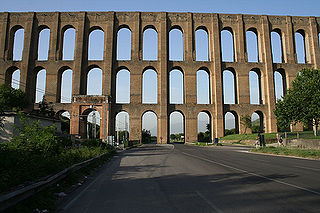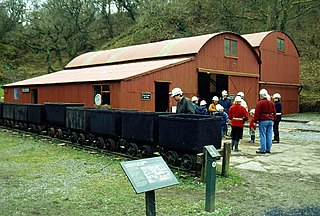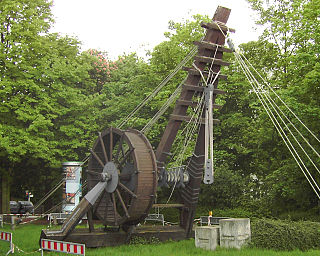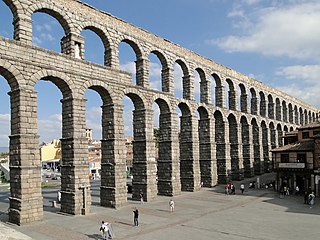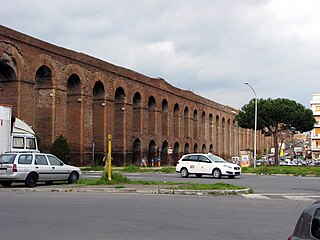This article needs additional citations for verification .(August 2017) (Learn how and when to remove this template message) |
The Roman baths of Toledo or Roman thermae of Amador de los Ríos are ruins of Roman thermae located in the city of Toledo in Castile-La Mancha, Spain. The baths can be seen as part of the system of supplying clean water to the city (then known by the Latin name of Toletum ). From the scale of the surviving infrastructure, they are assumed to have been a public facility. [1]

In historiography, ancient Rome is Roman civilization from the founding of the city of Rome in the 8th century BC to the collapse of the Western Roman Empire in the 5th century AD, encompassing the Roman Kingdom, Roman Republic and Roman Empire until the fall of the western empire. The civilization began as an Italic settlement in the Italian peninsula, dating from the 8th century BC, that grew into the city of Rome and which subsequently gave its name to the empire over which it ruled and to the widespread civilisation the empire developed. The Roman empire expanded to become one of the largest empires in the ancient world, though still ruled from the city, with an estimated 50 to 90 million inhabitants and covering 5.0 million square kilometres at its height in AD 117.

In ancient Rome, thermae and balneae were facilities for bathing. Thermae usually refers to the large imperial bath complexes, while balneae were smaller-scale facilities, public or private, that existed in great numbers throughout Rome.

Toledo is a city and municipality located in central Spain; it is the capital of the province of Toledo and the autonomous community of Castile–La Mancha. Toledo was declared a World Heritage Site by UNESCO in 1986 for its extensive monumental and cultural heritage.
Contents
As regards chronology, the remains correspond to a period between the end of the 1st century and mid-2nd century CE. [2]
Common Era or Current Era (CE) is one of the notation systems for the world's most widely used calendar era. BCE is the era before CE. BCE and CE are alternatives to the Dionysian AD and BC system. The Dionysian era distinguishes eras using AD and BC. Since the two notation systems are numerically equivalent, "2019 CE" corresponds to "AD 2019" and "400 BCE" corresponds to "400 BC". Both notations refer to the Gregorian calendar. The year-numbering system utilized by the Gregorian calendar is used throughout the world today, and is an international standard for civil calendars.
